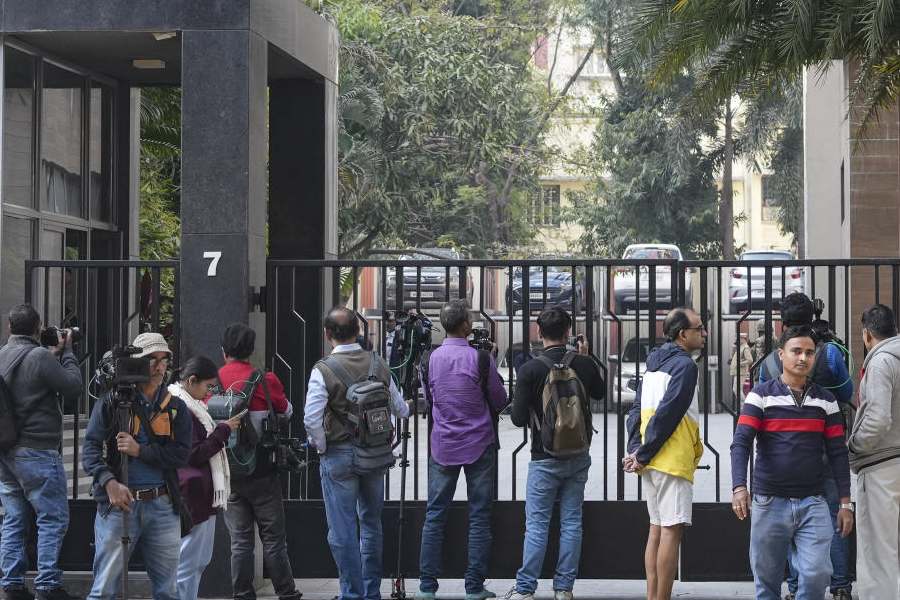 |
| Up in smoke: Iron and steel factory in Giridih |
Giridih, Feb. 24: For a getaway once famed for its uncontaminated ambience, this is a shocker. Rampant mining of coal and mica and poison fumes billowing out of sponge iron factories have left Giridih in its dying breath.
The muse of many greats such as Sir Jagadish Chandra Bose, Rabindranath Tagore, Prasanta Chandra Mahalanobis and Satyajit Ray, the district is today just a ghost of its past self — shrouded in an impervious blanket of black smoke.
According to the district industry department records, there are 39 iron and steel and 15 mica factories, besides six hard coke units, in Giridih. The iron and steel factories comprise sponge iron, ferro-alloy and pig iron units that contribute most to the rising pollution level. District mining officer Ratnesh Chandra said most of these factories mushroomed in the past 15 years and admitted that illegal mining was a serious problem in several industrial pockets of the district.
A recent Central Coalfields Limited (CCL) report shared his concern. It said that till February 19 more than 4,000 pits were plugged to scuttle illegal plans of the local coal mafia. Giridih houses no wing of the state pollution control board and, in the absence of a proper survey, no concrete measures are being taken to check the menace.
In 2008, the forest department conducted a study in some residential areas of the district. The findings were startling. While the permissible limit of suspended particulate matter (SPM) in residential areas is 200, the survey showed it to be nearly 600 in some pockets.
Thick layers of dust and clouds of smoke are causing a host of skin diseases and respiratory problems in the district. Doctors say lung diseases, including chronic bronchitis, asthma and pneumoconisis have increased in Giridih in recent times. Eye problems such as conjunctivitis are also on the rise. “One member in every family is suffering from respiratory problems. Tuberculosis is common and so is sclerosis. Medicines barely help when the air you are breathing in is polluted,” said Dr Siddharth Sanyal.
The principal of Giridih College and noted environmentalist, U.C. Mehta, agreed. He claimed the administration was doing little to curb the menace. “We want industries, but those that do not violate pollution guidelines. We want the government to act,” he said.
Divisional forest officer and member secretary of the local environment committee Akhilesh Sharma said a task force, comprising a member from the Hazaribagh district pollution control office, was formed on February 20 to identify factories flouting pollution guidelines. “We have already zeroed in on two firms — Swati Sponge and Adarsh Fuel,” he said. The member secretary’s assurances have, however, failed to satisfy environmentalists. They have demanded concrete measures against polluting factories.
It was way back in 1885 that Tagore first set his foot here. So inspired was he by Giridih’s virgin beauty that it became his second home. He frequented the place for two decades. In 1905, Tagore penned his Shivaji Utsav at Dawasika Bhavan here. The house still exists. Mahalanobis, too, remained a frequent visitor between 1925 and 1940. He established a wing of the Indian Statistical Institute here in 1931. Bose spent his last days in Giridih.
But those are days gone by. The Giridih that once not only won the hearts of Indians but also Englishmen is today buried in dust and grime.











